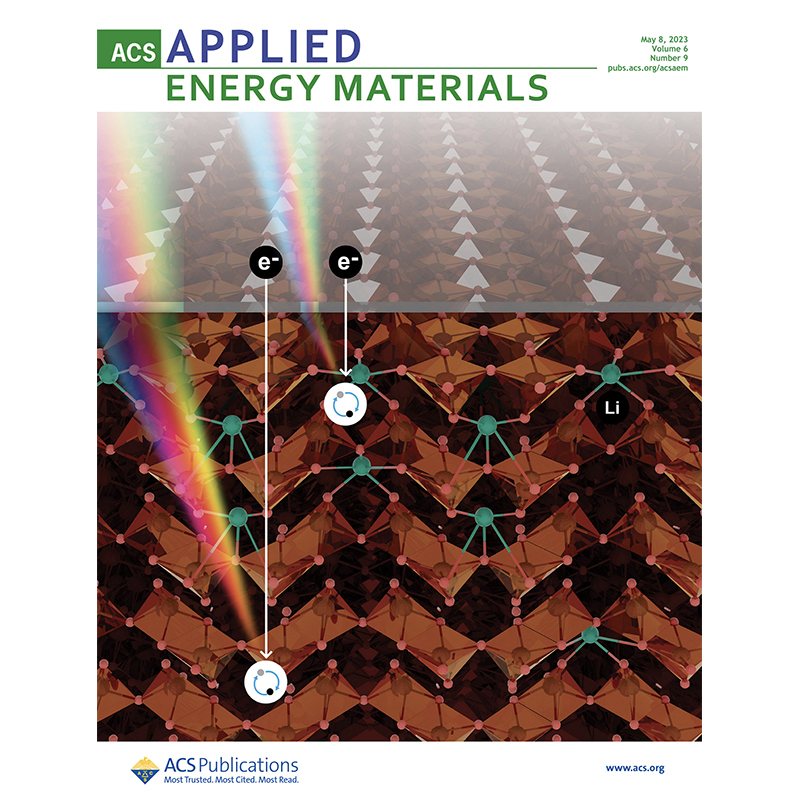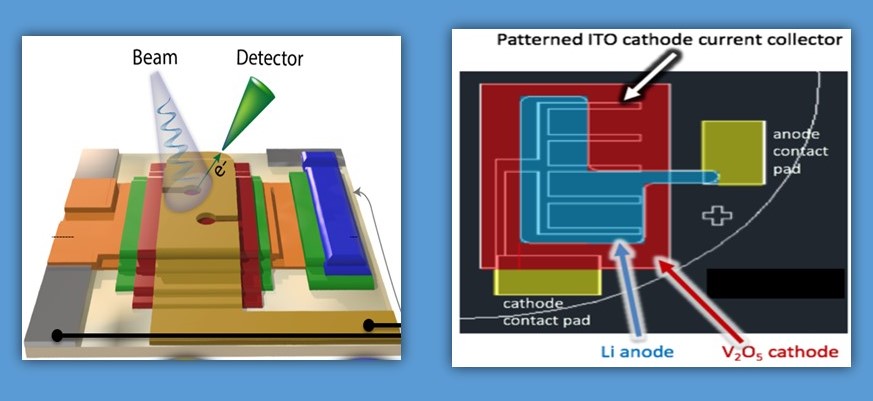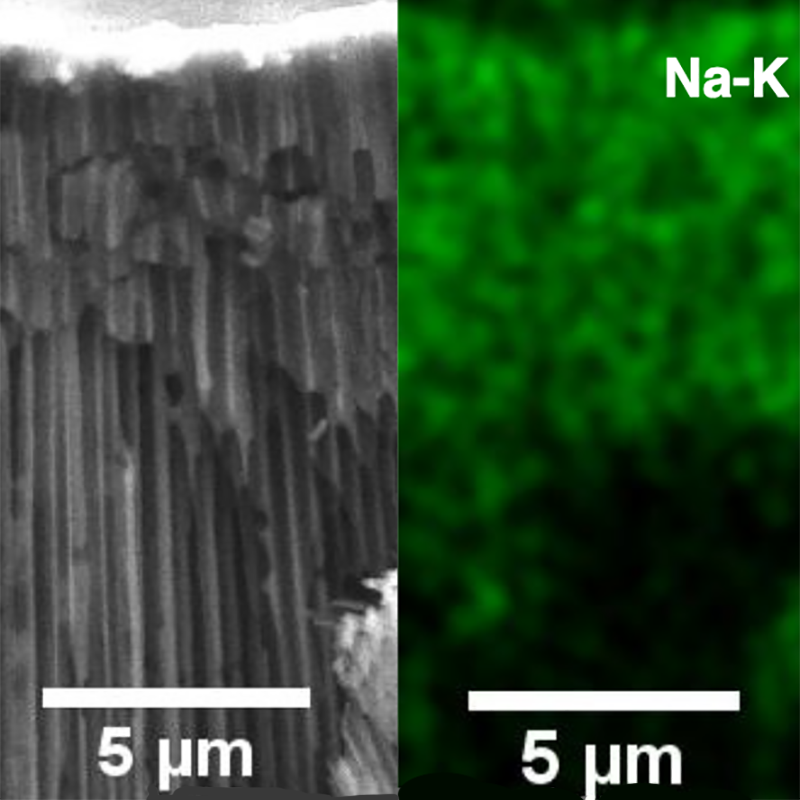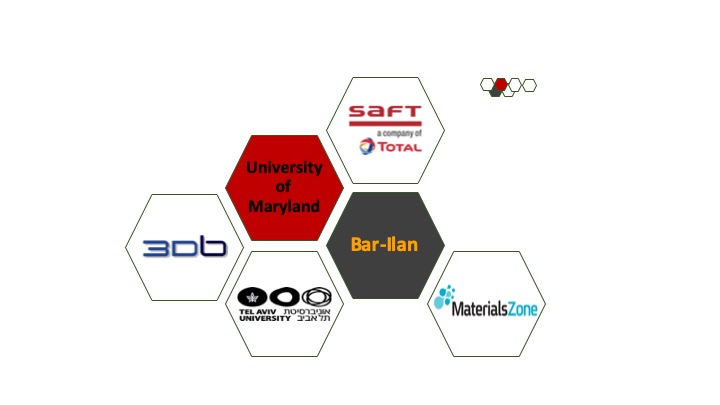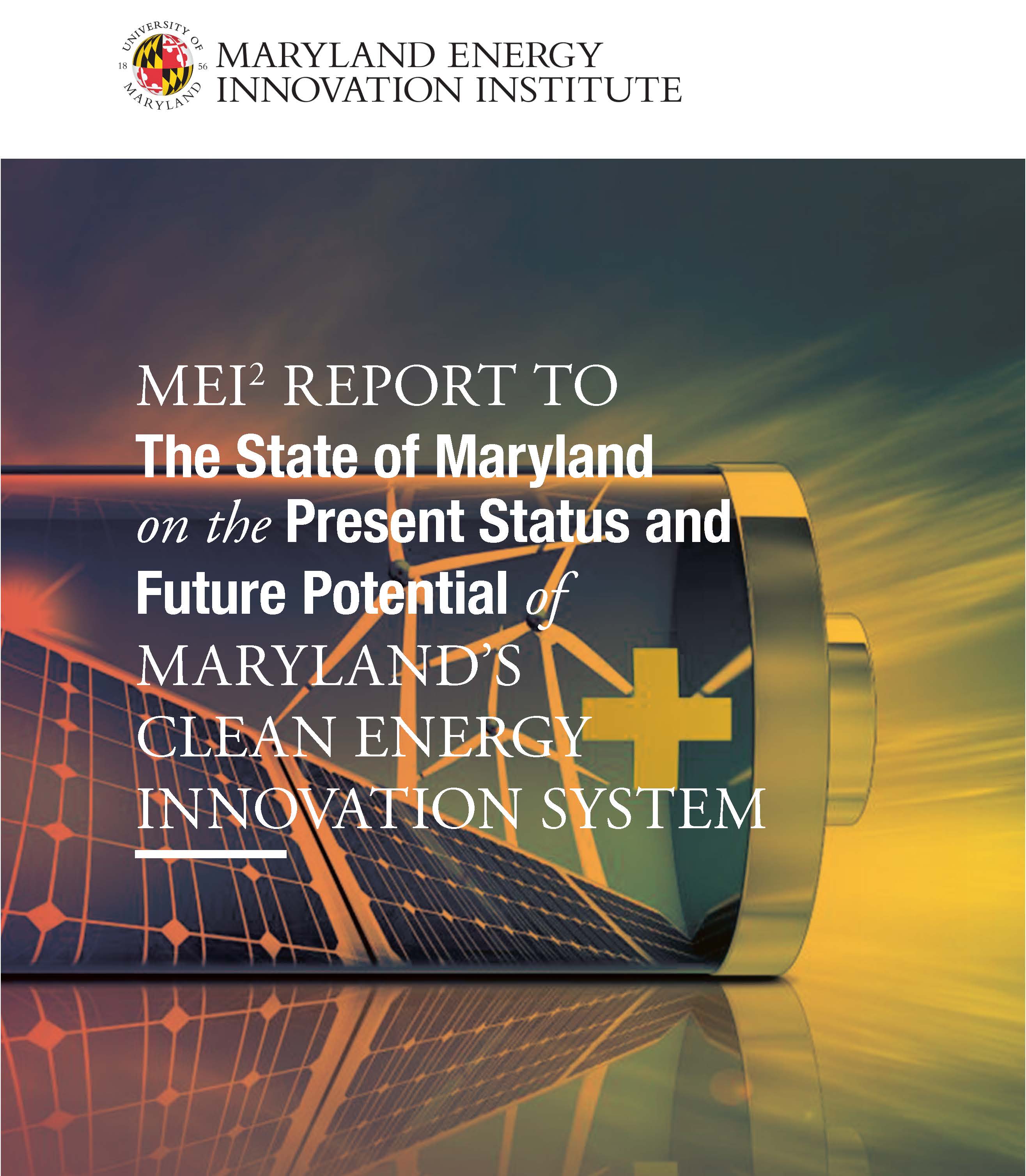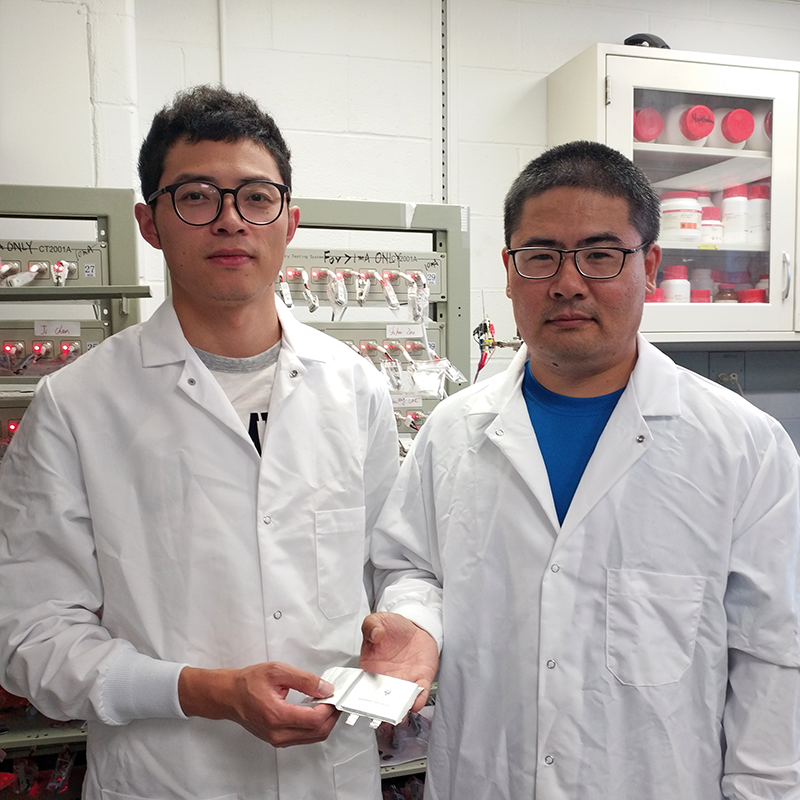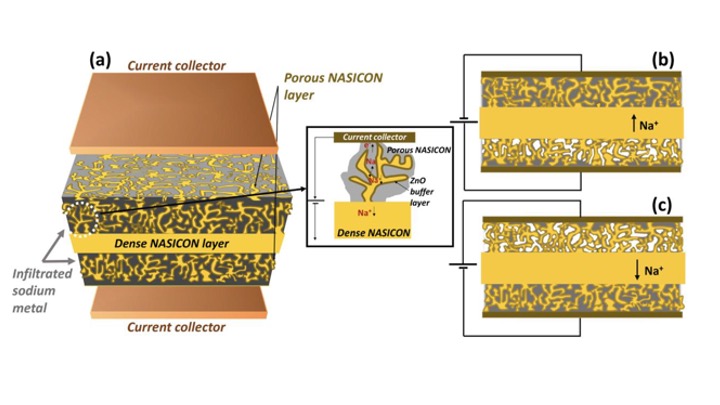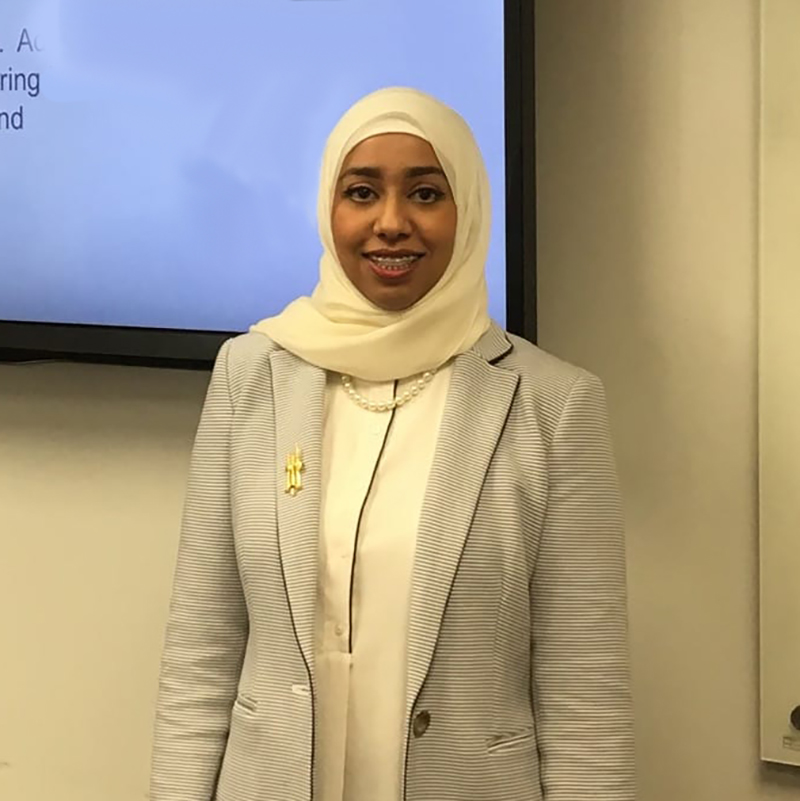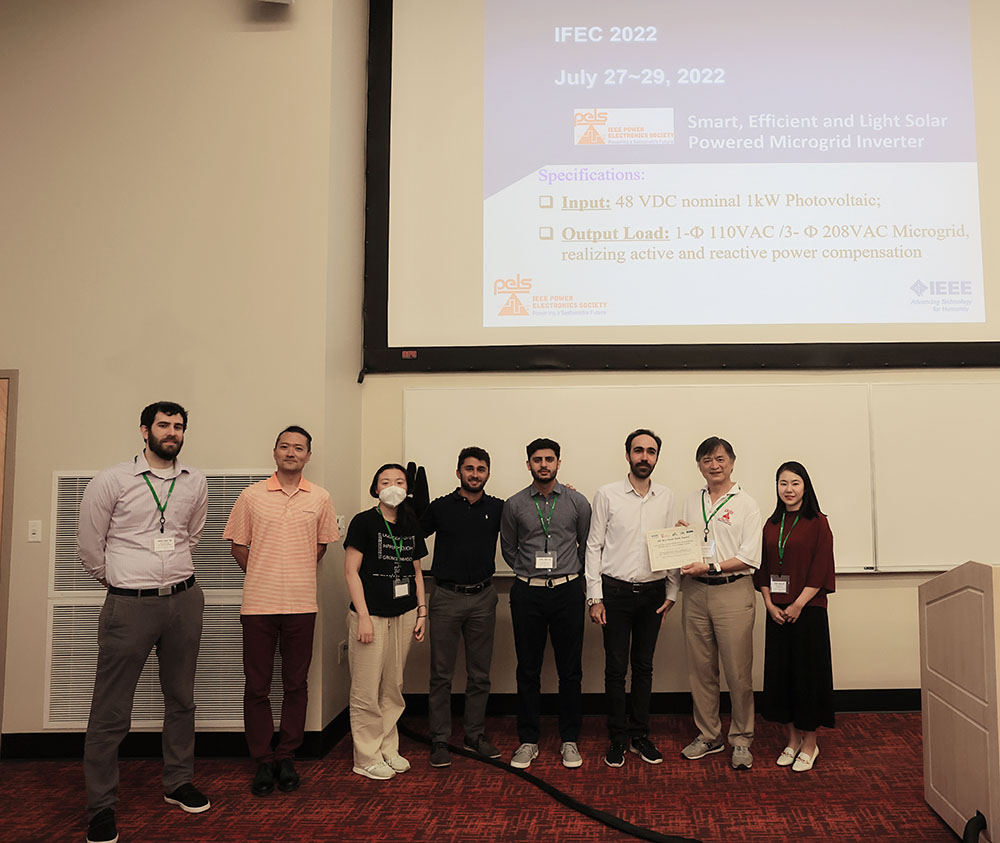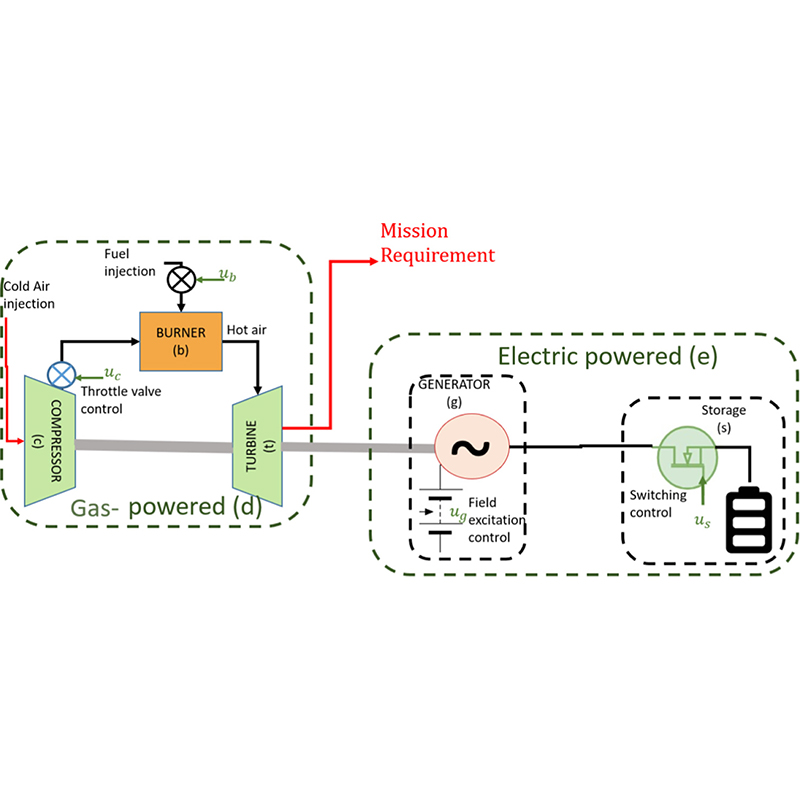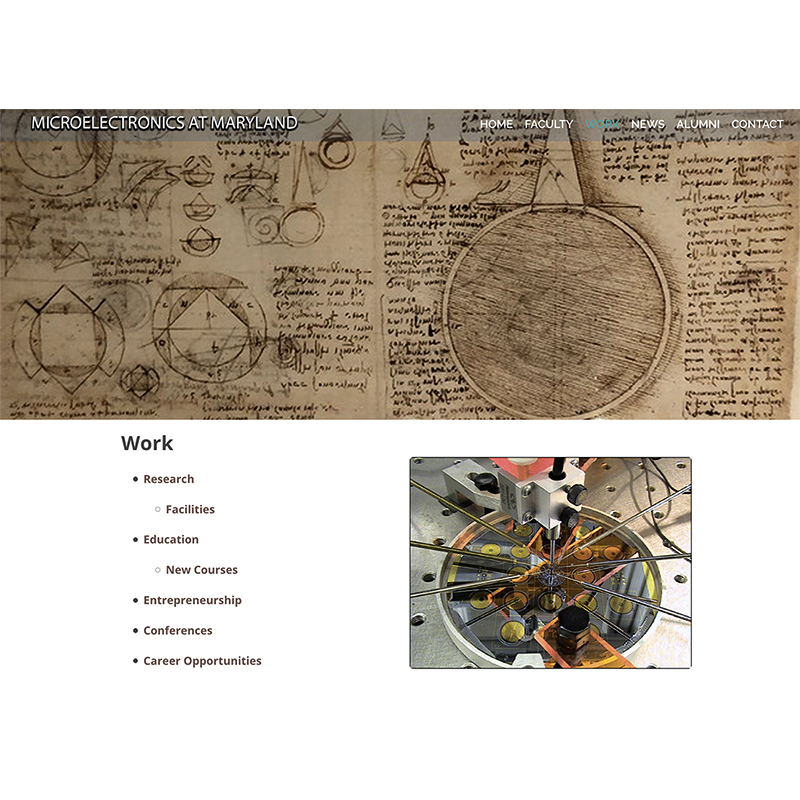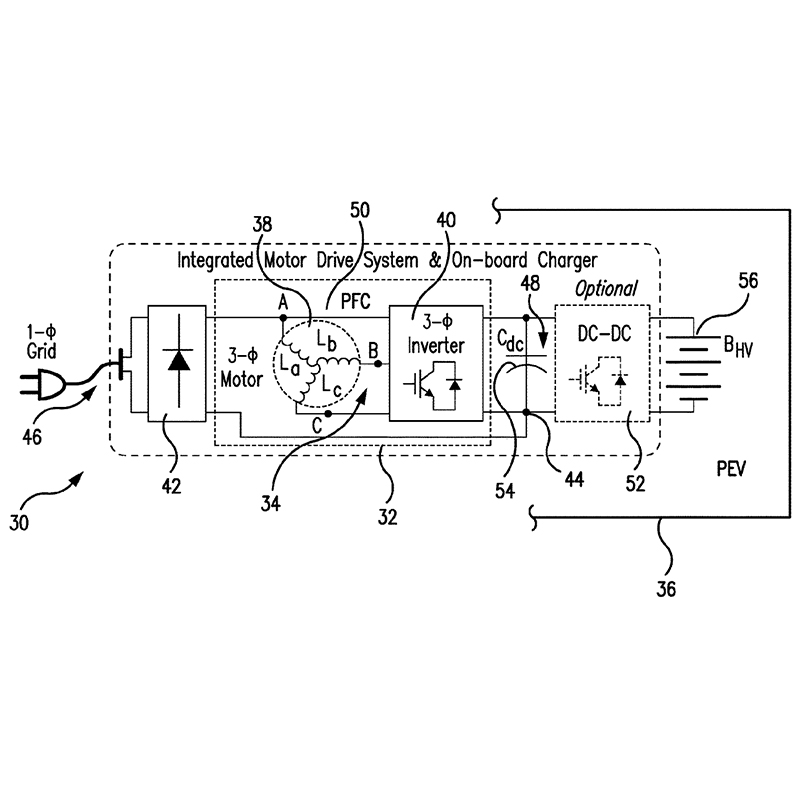Rupamathi Jaddivada (MIT), Marija Ilic (MIT), Eyad Abed
The researchers explore the potential of active control for end-to-end power trains of hybrid electric aircraft. They expand the operating envelope beyond compressor stall and surge limits, allowing a smaller engine to attain the same performance as a larger one.
Annual Reviews in Control 52
2023
Aisha Al-Obaid, Raymond Adomaitis
A computational algorithm to model an integrated photovoltaic–electrolysis-battery system is presented with the goal of identifying the system's optimal size, from a Pareto front analysis perspective, that maximizes the hydrogen production rate, minimizes the levelized cost of energy (LCE) and total system's cost, while targeting a net-zero grid energy operation.
Sustainable Energy & Fuels (Royal Society of Chemistry)
2021
Charles Manion, Mark Fuge
Current computational Design Synthesis approaches have had trouble generating components with higher kinematic pairs and have instead relied on libraries of predefined components. However, higher kinematic pairs are ubiquitous in many mechanical devices such as ratchets, latches, locks, trigger mechanisms, clock escapements, and materials handling systems. In many cases there is a need to synthesize new higher kinematic pair devices. To address this problem, we develop a new representation for mechanical systems that extends the capabilities of configuration spaces to consider arbitrary energy storing mechanical devices.
Proceedings of the ASME 2021 International Design Engineering Technical Conferences & Computers and Information in Engineering Conference (IDETC/CIE 2021)
2022
Stephanie Allen, John Dickerson, Steven Gabriel
The 2013 National Infrastructure Protection Plan (DHS, 2013) outlines the need for interconnected infrastructure systems to coordinate more and recognize their interdependencies. We model the two extremes of this coordination spectrum using two different multi-agent models: (a) a model called the “centralized model” in which the agents act as one unit in making decisions and (b) a model called the “individual model” in which the agents act completely separately and have either a pessimistic or optimistic assumption regarding the damages of the other infrastructure systems controlled by the other agents.
2nd AI4Science Workshop at the 39th International Conference on Machine Learning (ICML), 2022
Nathan Boyd, Steven Gabriel, George Rest, Tom Dumm
This paper investigates the game theory of resource-allocation situations where the “first come, first serve” heuristic creates inequitable, asymmetric benefits to the players. Specifically, this problem is formulated as a Generalized Nash Equilibrium Model where the players are arranged sequentially along a directed line graph. The goal of the model is to reduce the asymmetric benefits among the players using a policy instrument. It serves as a more realistic, alternative approach to the line-graph models considered in the cooperative game-theoretic literature.
arXiv.org
2021
J.C. Huemme, Steven Gabriel, P. Chanpiwat, T. Shu
The development and capabilities of the 2020 World Gas Model (WGM) are presented and exemplified through the analysis of two important case studies currently facing the natural gas market, a key component of the global energy sector.
Journal of Natural Gas Science and Engineering
Andrew Blohm, Jaden Crawford, Steven Gabriel
Residential demand response (DR) programs are generally administered through an electricity distribution utility, or an electric grid operator. These programs typically reduce electricity consumption by inducing behavioral changes in the occupants of participating households. The authors propose implementing a wholesale-price-sensitive residential DR program through the retail electricity provider (REP), who has more naturally aligned incentives to avoid high wholesale electricity prices and maintain customer satisfaction, as compared to distribution utilities, grid operators, and the average residential consumer. They find that on average a REP can avoid USD 62.07 annually per household using a load-shifting program. Given that REPs operate in a low-margin industry, an annual avoided cost of this magnitude is not trivial.
MDPI Energies
2020
Rachel Moglen, Pattanun Chanpiwat, Steven Gabriel
A dynamic programming formulation designed to optimally schedule demand response events to maximize savings for retail electric providers. Also considers the effects of price uncertainty on savings through the use of stochastic dynamic programming.
Energy Systems
Billy Champion, Steven Gabriel, Ahti Salo
A risk-based, stochastic multi-period model with binary decision variables at each stage has usefulness for planning the retrofitting of buildings for energy conservation.
Energy Systems
Simon Risanger, Stein-Erik Fleten, Steven A. Gabriel
Inverse equilibrium modeling is a data-driven method that fit parameters of an equilibrium model in order to minimize the deviation from an observation. This paper shows how to use Karush-Kuhn-Tucker (KKT)conditions to invert equilibrium problems.
IEEE Transactions on Power Systems
Steven A. Gabriel, Marina Leal, Martin Schmidt
This work presents different continuous reformulations of the binary constrained mixed complementarity problem, common in many real-world engineering-economic systems such as energy markets, transportation networks, or supply chains. The main idea is to obtain purely continuous reformulations so that local NLP solvers can be applied that are usually faster compared to mixed-integer solvers.
opus4.kobv.de
2019
Pattanun Chanpiwat , Steven A. Gabriel , Rachel L. Moglen , Michael J. Siemann
A practical means to analyze and cluster residential households into homogeneous groups based on electricity load, a top priority for retail electric providers so that they can effectively plan and conduct demand response.
ASME Journal of Engineering for Sustainable Buildings and Cities
2023
Yidi Shen, Daniel Zakzewski, Arafat Hasnain, Rakesh Resalayyan, Alireza Khaligh
Active power decoupling (APD) is a highly adopted technique for compact and reliable single-phase inverters to eliminate the undesired ac power drawn from the dc port. Typical operation of APD circuits requires the use of additional sensors measuring APD states to ensure proper decoupling. The additional voltage and current sensors add to system cost and hardware design complexity. This paper proposes a sensorless control approach that provides proper control of the APD without the use of additional sensors. The proposed predictive power decoupling control is analyzed together with the operating principle of the APD, and two types of error correctors are introduced to improve the control accuracy and reduce the reliance on the circuit component parameters.
IEEE Transactions on Power Electronics
Arafat Hasnain, Michael D'Antonio, Chanaka Singhabahu, Yidi Shen, Daniel Zakzewski, Alireza Khaligh
This work presents an optimal modulation and systematic filter design approach for a single-stage dual-active-bridge (DAB) based dc-ac microinverter to achieve improved differential-mode (DM) noise performance for electromagnetic interference (EMI) tests. As DM filters contribute significantly to the overall converter volume, the main objective of this work is to leverage the degrees of freedom in the DAB converters to effectively attenuate the EMI noise. In addition, the DM filter design method needs to ensure near unity power factor converter operation. To achieve these targets, this paper analyzes three modulation strategies based on fixed or variable switching frequency operation where the different control modulation variables are varied to find the simulated DM noise spectrum. Based on the required DM attenuation, a constrained optimization problem is formulated to determine minimal DM filter parameters. Simulation results show that a spread spectrum approach with variable switching frequency is shown to minimize the DM EMI attenuation effort by spreading the noise profile. A fully GaN 400 W hardware prototype demonstrates the spread-sprectrum approach.
2023 IEEE Applied Power Electronics Conference and Exposition (APEC)
Daniel Zakzewski, Rakesh Resalayyan, Arafat Hasnain, Chanaka Singhabahu, Alireza Khaligh
This work presents control system design, implementation, and experimental validation of a single-stage 400 W, 200 kHz solar photovoltaic (PV) microinverter using hardware-in-the-loop (HIL) and hardware testing. The selected circuit topology is based on a Gallium Nitride (GaN) direct-matrix based dual active bridge (DAB) converter with a low voltage active power decoupler (APD) circuit. Control performance is verified, smart-grid compatibility is tested, and circuit operation is confirmed. Controller HIL (CHIL) is shown to aid in a complex power electronics system design by 1) enabling detailed control development prior to hardware implementation, 2) expanding the use of automated testing, and 3) increasing confidence in control performance prior to prototype testing. Altogether, these factors make HIL a valuable tool in complex power electronic designs.
2023 IEEE Applied Power Electronics Conference and Exposition (APEC)
Daniel Zakzewski, Rakesh Resalayyan, Apurv Kumar Yadav, Alireza Khaligh
A closed form analytical model for semiconductor and capacitor currents in a 5-Level Active Neutral Point Clamped Converter (5L-ANPC) topology. This model enables device selection, performance prediction, and design optimization of the topology. Models for the switch and FC currents are derived based on the topology's switching states. A model for input capacitor current is derived by analyzing the interaction of three phase legs of the topology. The model is verified using conventional time-domain switching simulation of the topology.
2023 IEEE International Conference on Electrical Systems for Aircraft, Railway, Ship Propulsion and Road Vehicles & International Transportation Electrification Conference (ESARS-ITEC)
2022
Chanaka Singhabahu, Akshay Singh, Arafat Hasnain, Apurv Kumar Yadav, Jianfei Chen, Alireza Khaligh
A systematic design framework to realize a highly efficient and compact planar magnetic link for a quadruple-active-bridge (QAB) converter. The proposed design framework comprises multi-objective optimization methods for all magnetic components in the high-frequency link, namely, the multi-winding transformer and the series branch inductors.
2022 IEEE Industry Applications Society Annual Meeting (IAS)
Shenli Zou, Chanaka Singhabahu, Jianfei Chen, Alireza Khaligh
To precisely predict the PFC choke inductance and its losses, a dynamic ripple-based inductor modeling technique is proposed, considering the real-time current ripple over each switching cycle.
2022 IEEE 31st International Symposium on Industrial Electronics (ISIE)
Ayodhya Somiruwan Gamwari, Chanaka Singhabahu, Rakesh Resalayyan, Yongwan Park, Alireza Khaligh
Switching function approach is a powerful and computationally efficient method to simulate a voltage source inverter. In this paper, the authors extend this idea to design an input filter capacitor, compute the power loss in switches and investigate the thermal performance. This paper provides a simple approach to design an inverter and its auxiliary power components.
2022 IEEE 31st International Symposium on Industrial Electronics (ISIE)
Yidi Shen, Michael D'Antonio, Shiladri Chakraborty, Arafat Hasnain, Alireza Khaligh
Single-phase inverter or rectifier systems often make use of an active power decoupler (APD) to balance the mismatch between constant dc power and fluctuating ac power. This article deals with the comparison of continuous conduction mode (CCM) and critical conduction mode (CRM) operation-based design of a parallel boost-type APD for photovoltaic microinverter applications.
IEEE Transactions on Power Electronics
Yongwan Park, Shiladri Chakraborty, Alireza Khaligh
A detailed analysis and characterization results of a bare-die Silicon Carbide (SiC) MOSFET-based, half-bridge switch module with integrated decoupling capacitors and gate-driver circuitry, suitable for high-performance power electronics in applications like next-generation automotive systems.
IEEE Transactions on Transportation Electrification
Shenli Zou, Chanaka Singhabahu, Jianfei Chen, Alireza Khaligh
A new three-winding planar transformer design with the integrated leakage inductor is proposed for a triple-active-bridge converter. It enables two output voltage levels: a high voltage (HV) output port and a low voltage (LV) output port. The primary and secondary windings are split unevenly in both side legs while the tertiary winding is connected in parallel. The unique winding configuration enables enhanced efficiency with low volume and suppressed parasitic capacitances.
IET Power Electronics
2021
Yongwan Park, Shiladri Chakraborty, Alireza Khaligh
This paper discusses electrical design optimization of a 3.3 kW, 380 V to 250-380 V, 500 kHz, dual-active-bridge dc-dc converter for on-board chargers, operated with constant-power charging.
IEEE Transactions on Transportation Electrification
Michael D'Antonio, Shiladri Chakraborty, Alireza Khaligh
The authors create a novel planar-based transformer winding and core structure with controllable leakage inductance generation for integrated magnetics applications.
IEEE Transactions on Power Electronics
2020
Michael D'Antonio, Shiladri Chakraborty, Alireza Khaligh
This paper presents an improved analytical modeling (IAM) approach for the dual-active-bridge (DAB) converter in the frequency-domain. Specifically, finite transition times are incorporated into the improved modeling that is significant in DAB converters operated at high frequency.
IEEE Transactions on Power Electronics
Yidi Shen, Michael D'Antonio, Shiladri Chakraborty, Alireza Khaligh
This paper deals with efficiency and size optimization of a parallel boost-type APD circuit for PV microinverter applications.
IEEE Energy Conversion Congress and Exposition (ECCE)
Michael D'Antonio, Shiladri Chakraborty, Alireza Khaligh
A harmonic-superposition-based frequency-domain approach for analysis and optimal design of a single-stage DAB-based DC-AC converter used in low-voltage DC to high voltage AC applications, such as a PV microinverter.
IEEE Energy Conversion Congress and Exposition (ECCE)
Yongwan Park, Shiladri Chakraborty, Alireza Khaligh
This paper discusses electrical design aspects of a cooling system-integrated, high power-density, 800 V to 600-800 V, bare-die SiC-based, 1 MHz, dual-active-bridge (DAB) dc-dc converter for three-phase onboard charging systems of electric vehicles.
2020 IEEE Transportation Electrification Conference & Expo (ITEC)
Yongwan Park,Sevket Yuruker, Shiladri Chakraborty, Alireza Khaligh, Raphael Mandel, Patrick McCluskey, Michael Ohadi, Lauren Boteler, Miguel Hinojosa
This paper presents electro-thermal design optimization of a high-frequency planar transformer with an integrated thermal management system involving a liquid-cooled chamber for combined core and winding cooling.
2020 IEEE Transportation Electrification Conference & Expo (ITEC)
2023
Zach Levy, Victoria Castagna Ferrari, Pablo Rosas, Mitchell J. Walker, Kalpak Duddella, Micah Haseman, David Stewart, Gary Rubloff, Leonard J. Brillson
A combination of depth-resolved cathodoluminescence spectroscopy (DRCLS) and X-ray photoemission depth profiling (XPS) measured the pronounced changes in both the electronic density of states and lithium composition near the nanoscale LixV2O5/LiPON interface. DRCLS studies of electrochemically lithiated bare V2O5 and the sputter-deposited V2O5 plus LiPON overlayer electrochemically lithiated in stages both showed that in the bulk the luminescence intensity of the “split-off” hybridized bonding density of states was anticorrelated with XPS-measured Li content, decreasing as the Li content increased. However, the LiPON overlayer was found to modify the band structure of the underlying LixV2O5 (LVO) to a depth of at least 30 nm beneath the V2O5 interface. DRCLS spectra near the electrochemically lithiated LiPON/LVO interface showed a significant intensity of the split-off band, implying a low Li content. However, XPS depth profiling revealed a pronounced negative gradient of Li extending from a maximum Li content at the intimate LiPON boundary to its lowest content of ∼30 nm into the V2O5 in the same region, indicating a strong interaction between band structure and Li electrochemical potential near this heterojunction. These results provide evidence for substantial effects on the local band structure near an electrolyte/cathode interface and insights into the electrochemical interface behavior of solid-state batteries in general.
Applied Energy Materials
2022
Yang Wang, Sam Klueter, Myungsuk Lee, Junnyeong Yun, Binh Hoang, Elias Kallon, Cholho Lee, Chuan-Fu Lin, Gary W. Rubloff, Sang Bok Lee, Alexander C. Kozen
Researchers are racing to develop alternatives to Li-ion batteries, primarily through using solid-state electrolyte (SSE) materials. The superionic conductor SSE known as Li10GeP2S12 (LGPS) is especially promising because of its exceptionally high ionic conductivity that approximates conventional liquid electrolytes. While LGPS shows exceptional potential to fulfill the promise of solid-state batteries, unfortunately it is chemically and electrochemically unstable against both Li metal anodes and high voltage Li-ion cathode materials. This instability dramatically reduces the efficiency of LGPS-based battery systems. This study examines ways to mitigate the electrochemical LGPS degradation through the use of coatings such as ALD LiPON.
Materials Advances (Royal Society of Chemistry)
Daniela Fontecha, Ramsay Blake Nuwayhid, Alexander Kozen, David Stewart, Gary Rubloff, Keith Gregorczyk
Demonstrates the development of NaPON via PEALD, which can operate at lower processing temperatures than the previously published thermal ALD NaPON process.
Journal of Vacuum Science and Technology A
2021
Emily Hitz, Hua Xie, Yi Lin, John Connell, Gary Rubloff, Chuan-Fu Lin, Liangbing Hu
Lithium metal batteries bring greater promise for energy density, often relying on solid-state electrolytes to meet critical benchmarks. However, Li dendrite formation is a prevailing problem that limits the cycle life and Coulombic efficiency of solid-state Li metal batteries. For the first time, a thin (<100 nm) layer of electronically insulating, ionically conducting lithium phosphorus oxynitride (LiPON) is applied using atomic layer deposition between a Li anode and garnet Li7La3Zr2O12 (LLZO).
Small Structures
2020
Angelique Jarry, Mitchell Walker, Stefan Theodoru, Leonard Brillson, Gary W. Rubloff
Investigates the effects of lithiation on the structural and optical characteristics of a model thin film system—LixV2O5—as a function of depth, using several highly sensitive and nondestructive spectroscopic methods with different depth sensitivities.
ACS Chemistry of Materials
Ramsay Blake Nuwayhid, Angelique Jarry, Keith Gregorczyk, Gary W. Rubloff
Demonstrates a thermal atomic layer deposition process for sodium phosphorus oxynitride (NaPON), a thin-film solid-state electrolyte for sodium-ion batteries. NaPON could become a viable solid-state electrolyte or passivation layer for solid-state sodium-ion batteries.
ACS Applied Materials and Interfaces
Emily Sahadeo, Yang Wang, Chuan-Fu Lin, Yue Li, Gary W. Rubloff, Sang Bok Lee
The polymerization behavior of DOL with multivalent Mg and Al salts is investigated. The researchers conclude that strong Lewis acid cations such as Al3+ and Mg2+ can catalyze DOL polymerization and their Lewis acidity, and ability to catalyze the reaction, is influenced by the associated anion. These discoveries could help expand the applications of Lewis acid catalysts in polymerization reactions and give insight into the importance of the properties of metal salts. These insights may also be critical in deciding whether to utilize DOL as a solvent for Mg battery systems and what electrolyte compositions may be ideal.
Chemical Communications
Matthew Widstrom, Kyle Ludwig, Jesse Matthews, Angelique Jarry, Metecan Erdi, Arthur Cresce, Gary Rubloff, Peter Kofinas
Ionic conductivity needs to be improved significantly for solid polymer electrolytes to be considered competitive alternatives to organic liquid electrolytes for battery technology. The strategy employed in this paper is to promote polymer microstructures that facilitate ion transport by developing an amorphous rather than crystalline polymer matrix.
Electrochimica Acta
Haotian Wang, Keith E. Gregorczyk, Sang Bok Lee, Gary W. Rubloff, Chuan-Fu Lin
In combining organometallic with organic precursors, molecular layer deposition (MLD) offers not only an expanded portfolio of molecular combinations but specifically the possibility of tuning mechanical properties for more robust functionality. This is appealing for applications in energy storage, where ion transport in and out of electrodes causes significant stress/strain cycling. It is particularly opportune for Li ion solid state batteries (LISSBs), where electrode and solid electrolyte structures are usually arranged densely for high power and energy. Despite diverse MLD applications to date, little prior research has been aimed at Li-containing MLD materials and processes. This work demonstrates the synthesis of a Li-containing organic thin film using organic-inorganic MLD reaction between LiOtBu and PD.
The Journal of Physical Chemistry C
2019
Angelique Jarry, Emily Hitz, Jake Ballard, Carine L Margez, Joong Sun Park, Thomas A Greszler, Chuan-Fu Lin, Gary W. Rubloff
Among the different rechargeable battery technologies available, Co/Ni/Mn-based Li-ion systems appear to be a leading contender for automotive applications as a result of their high specific energy. However, the high operating potential of this system is outside the thermodynamic stability window of standard organic carbonate-based electrolytes. This results in electrolyte oxidation with transition metal dissolution and gas formation at the electrode/electrolyte interface during cycling, which leads to severe loss of electrochemical performance. To address these challenges, many strategies are currently being investigated, ranging from the development of new electrodes and electrolytes to the improvement of commercial Li-ion systems by surface engineering of the interfaces.
In this work, we mitigate parasitic interfacial processes in start/stop batteries by atomic layer deposition (ALD). We develop an Al2O3 or LiPON conformal artificial SEI layer on LMO and LTO electrodes and study its effect on the Li-ion batteries failure modes with differential electrochemical mass spectroscopy (DEMS), X-ray Photoelectron Spectroscopy (XPS) and ICP measurements. The beneficial impact of the protection layer on the kinetics of the gassing, metal dissolution and associated chemical cross-talk was clearly identified. The presence of a protection layer at the LMO surface, in particular of a 10 nm LiPON conformal layer, mitigate the electrolyte oxidation at high voltage at 60°C with a significant reduction of the amount of H2 produced. The formation of metal complexes and subsequent poisoning of the SEI is also attenuated. Interestingly, counter intuitively, the ratio of the inorganic to organic components of the SEI is lowered by the presence of an inorganic protection layer. The correlation between the nature of the electrode protection layer, the electrode's surface activity, and associated organic electrolyte oxidation pathways will be presented and discussed.
Electrochemical Society Meeting Abstracts
2020
Liuxian Zhao, Miao Yu
A practical reduced aberration acoustic Luneburg lens (RAALL) is proposed for broadband and omnidirectional acoustic collimation and focusing with reduced aberrations.
arXiv.org
Liuxian Zhao, Miao Yu
A flattened structural Luneburg lens (FSLL) based on structural thickness variations is designed by using the quasi-conformal transformation (QCT)technique.
Journal of the Acoustical Society of America
Liuxian Zhao, Changquan Lai, Miao Yu
An alternative structural Luneburg lens which has a refractive index that varies smoothly with its radial distance as a result of a changing thickness.
Mechanical Systems and Signal Processing
Liuxian Zhao, Miao Yu
The paper explores the concept of a structural Luneburg Lens as a design framework for performing dynamic structural tailoring to obtain a structural wave cloak and a structural waveguide.
Nature Scientific Reports
Liuxian Zhao, Changquan Lai, Miao Yu
The paper proposes an alternative structural Luneburg lens with a refractive index that varies smoothly with its radial distance as a result of a changing thickness. This simple lens design enables a continuous gradient of refractive index, which allows flexural wave propagation to be manipulated and overcomes limitations in existing wave manipulation devices.
arXiv.org
